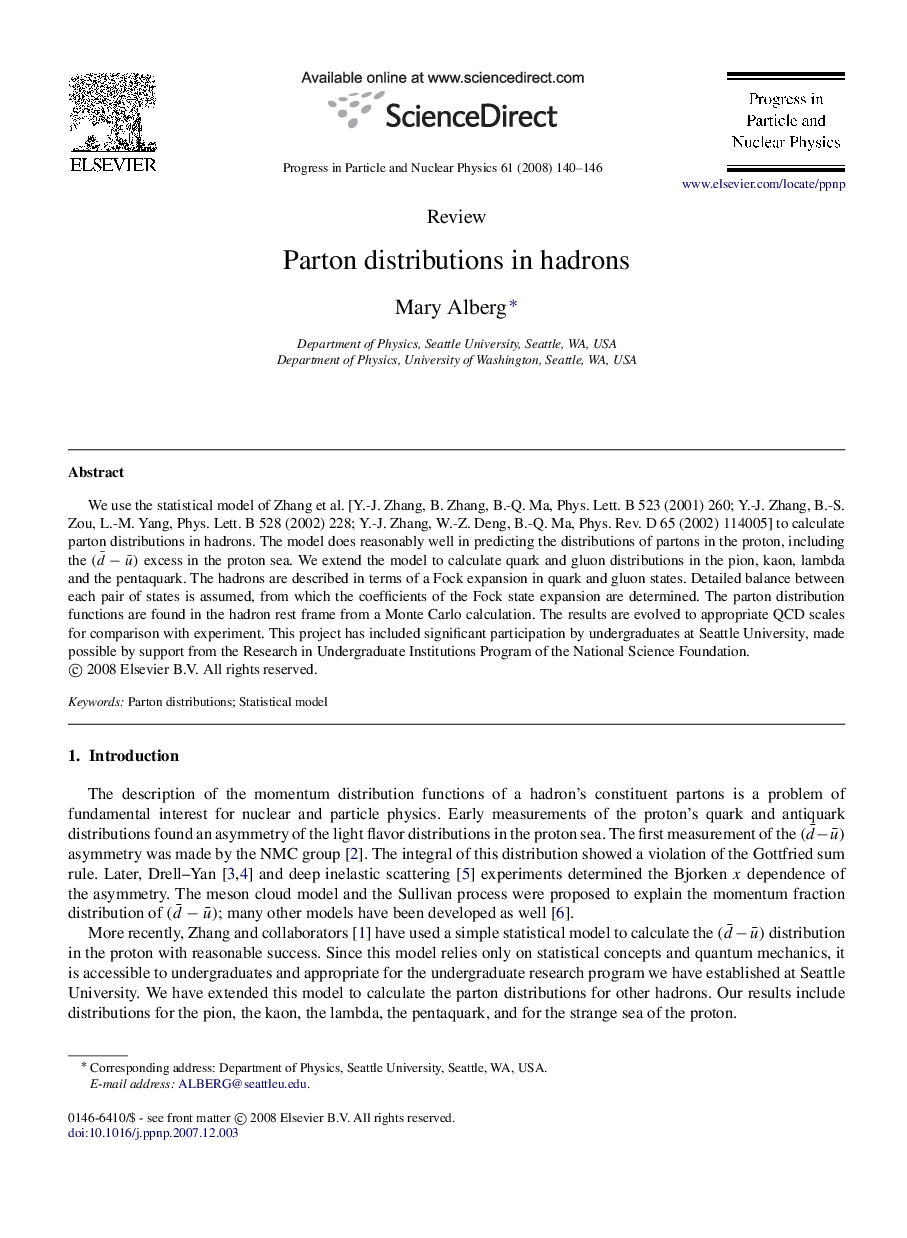| Article ID | Journal | Published Year | Pages | File Type |
|---|---|---|---|---|
| 1854099 | Progress in Particle and Nuclear Physics | 2008 | 7 Pages |
Abstract
We use the statistical model of Zhang et al. [Y.-J. Zhang, B. Zhang, B.-Q. Ma, Phys. Lett. B 523 (2001) 260; Y.-J. Zhang, B.-S. Zou, L.-M. Yang, Phys. Lett. B 528 (2002) 228; Y.-J. Zhang, W.-Z. Deng, B.-Q. Ma, Phys. Rev. D 65 (2002) 114005] to calculate parton distributions in hadrons. The model does reasonably well in predicting the distributions of partons in the proton, including the (dÌâuÌ) excess in the proton sea. We extend the model to calculate quark and gluon distributions in the pion, kaon, lambda and the pentaquark. The hadrons are described in terms of a Fock expansion in quark and gluon states. Detailed balance between each pair of states is assumed, from which the coefficients of the Fock state expansion are determined. The parton distribution functions are found in the hadron rest frame from a Monte Carlo calculation. The results are evolved to appropriate QCD scales for comparison with experiment. This project has included significant participation by undergraduates at Seattle University, made possible by support from the Research in Undergraduate Institutions Program of the National Science Foundation.
Related Topics
Physical Sciences and Engineering
Physics and Astronomy
Nuclear and High Energy Physics
Authors
Mary Alberg,
